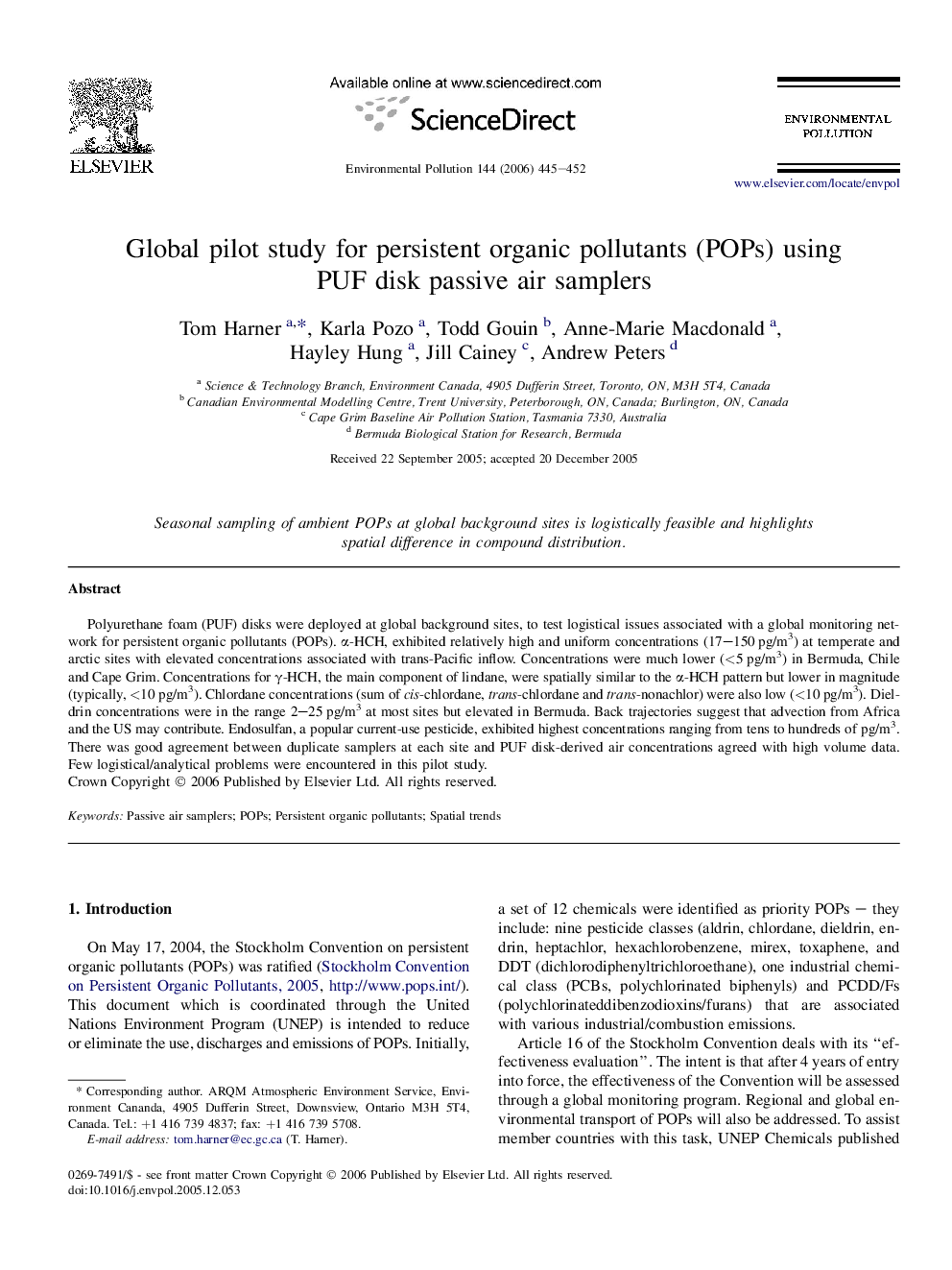| کد مقاله | کد نشریه | سال انتشار | مقاله انگلیسی | نسخه تمام متن |
|---|---|---|---|---|
| 4427766 | 1309168 | 2006 | 8 صفحه PDF | دانلود رایگان |

Polyurethane foam (PUF) disks were deployed at global background sites, to test logistical issues associated with a global monitoring network for persistent organic pollutants (POPs). α-HCH, exhibited relatively high and uniform concentrations (17–150 pg/m3) at temperate and arctic sites with elevated concentrations associated with trans-Pacific inflow. Concentrations were much lower (<5 pg/m3) in Bermuda, Chile and Cape Grim. Concentrations for γ-HCH, the main component of lindane, were spatially similar to the α-HCH pattern but lower in magnitude (typically, <10 pg/m3). Chlordane concentrations (sum of cis-chlordane, trans-chlordane and trans-nonachlor) were also low (<10 pg/m3). Dieldrin concentrations were in the range 2–25 pg/m3 at most sites but elevated in Bermuda. Back trajectories suggest that advection from Africa and the US may contribute. Endosulfan, a popular current-use pesticide, exhibited highest concentrations ranging from tens to hundreds of pg/m3. There was good agreement between duplicate samplers at each site and PUF disk-derived air concentrations agreed with high volume data. Few logistical/analytical problems were encountered in this pilot study.
Journal: Environmental Pollution - Volume 144, Issue 2, November 2006, Pages 445–452